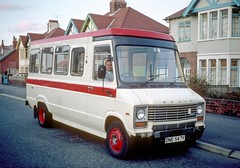Saturday, March 12, 2005
In a vote of 74-25 last Thursday, the US Senate passed a measure that would change bankruptcy laws, making it harder for individuals seeking relief from their debt burden to avoid repayment. Almost twenty Democrats joined Republicans, who currently hold a majority of the seats in the US Senate, in passing the bill.
Lobbyists for credit card companies and financial services firms have worked for the bill during the last two administrations. A similar measure passed both the Senate and House during the previous administration, but then President Bill Clinton pocket-vetoed the measure in 2000.
Democrats sought to soften the bill by allowing bankruptcy filers to negotiate directly with lenders for relief, but the amendments were defeated by the Republican-controlled Senate. Proponents of the bill claim the rise of bankruptcy filings to nearly 1.5 million a year shows that abusers of credit use the filings to shield themselves from irresponsible practices.
“There has been an explosion of bankruptcy,” said Iowa Republican Sen. Charles E. Grassley, the bill’s sponsor. “We preserve the principle of a fresh start, but we also establish a principle that if you have the ability to repay some of your debt, you are not going to get off scot-free.” However, Massachusetts Democratic Sen., Edward M. Kennedy said, “This legislation makes the bankruptcy courts of the United States the collection agency for the credit-card industry.”
The bill impacts a broad spectrum of bankruptcy law, but the most significant impact is on personal bankruptcy filings. Individuals who get behind in repaying credit card debt face high interest charges and stiff late payment fees. By only meeting minimum payment requirements, borrowers remit to the lender over the life of the loan an amount in interest and other fees that can far exceed the value of the principal balance of the loan. This can put consumers who run up high balances on various cards at financial risk of default. Critics of the bill blame these aggressive lending practices as a contributing factor in the rising trend of bankruptcy filings from 1996.
The proposed bill doesn’t only affect debtors with credit card debt.
It also affects debtors who have run up large medical bills.
Patients with a past medical history that disqualifies them from full medical coverage, can easily find themselves facing insurmountable medical bills after just a short stay in the hospital. These individuals will no longer be able to get a fresh start after these personal disasters, and will be forced to live in poverty until they can pay off their medical bills as part of their Chapter 13 filing. (Prior to this bill, they would have been able to file Chapter 7, completely discharging their debt.)
Chapter 7, which accounts for 70% of bankruptcy filings, allows individuals to eliminate most non-secured debts after liquidating assets, with the notable exemption of one’s principle residence in most states. The Senate passed bill would change Chapter 7 eligibility by applying a means-test, where those with a median income higher than the state average would be required to file under Chapter 13 provisions. Under Chapter 13 protection, an individual’s debt is not forgiven; rather it is restructured for payment under more lenient terms.
This was the first major overhaul of federal bankruptcy law in many years.
Under the old bankruptcy law, a personal bankruptcy attorney could not be held financially responsible for his clients mendacity. Under the new bankruptcy law, the bankruptcy attorney is responsible for his client’s lies to the Court about his assets and the bankruptcy attorney and his insurance carrier can be held responsible by the Bankruptcy Court.
The result is that personal bankruptcy attorneys (this does not apply to corporate bankruptcy attorneys) are likely to flee the personal bankruptcy field when the new law takes effect. Their insurance companies will not offer the sort of coverage that they would need to continue to practice.
So when consumers need to file personal bankruptcy under the new law, they will be unlikely to find a bankruptcy attorney to represent them. Consumers will have to file pro se: such consumers will be likely to fail due to the complexity of the law.
The bottom line is that the field of personal bankruptcy law as a practice area of law will cease to exist when the new bankruptcy law takes effect, and consumers will be unable to secure legal counsel and so consumers will lose what legal protections counsel now affords them.
Under the new bankruptcy law about one half million Americans will be forest to pay for at lest 5 years on longer they will be held in servitude as chattel they will be completely subservient to a dominating influence of the company that holds the loan. Their loan will be put on the market for sale for profit. The people will be forced to work harder. People who fail to go to court will have a arrest warrant made out in their name and people who refuseto pay. They will be subject to fines and or jail. About fifty thousand Americans will punished by a fine and or about three thousand Americans every year will go to jail under the new bankruptcy law. For some people this will be a third strike they will be put in jail for life.
The bill has the support of President Bush, and its passage in the House sometime next month seems likely. If enacted into law, lending companies will recover more money on what otherwise would be written off as bad loans. Those persons of median and higher income seeking relief would be required to file under Chapter 13 status and pay up to $100 per month under court imposed conditions. It is expected the proposed changes would cause a sharp increase in filings before the new law could take effect.


